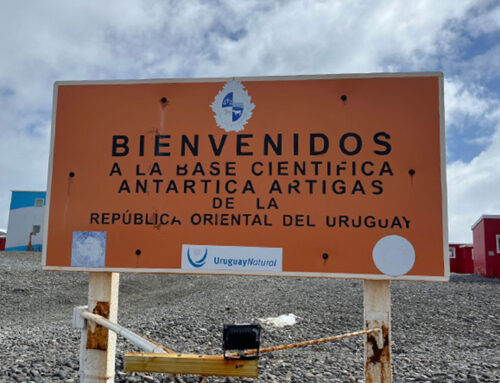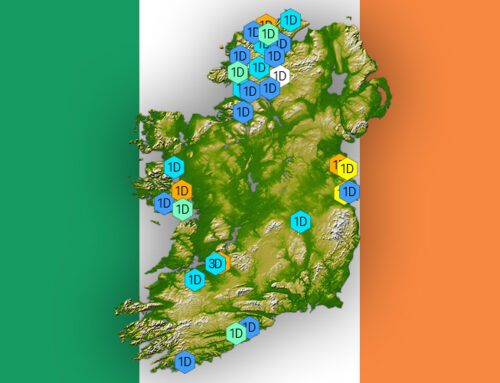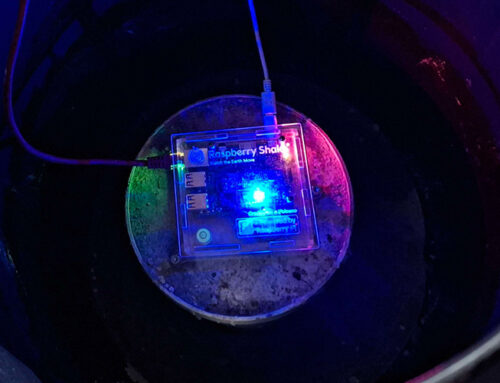BACK TO ANTARCTICA: SEISMOGRAPH CHECKUP AND NEW DEPLOYMENTS
September 30, 2020 – Written by Kate Winter, recipient of the 2018 Fonds Baillet Latour Antarctica Fellowship
All photos by: Kate Winter (Northumbria University) and the International Polar Foundation
2020 OFF TO A FLYING START
What a year this has been! And 2020 started out so well for me… I spent New Year in Cape Town, arriving a week before my scheduled departure to Antarctica. After a boomerang flight across the Southern Ocean with former Vice President Al Gore (we couldn’t land because of bad weather in Antarctica, so had to come back to Cape Town), I finally arrived on the 13th of January at my home away from home: The Princess Elisabeth Antarctica Research Station. The storm had blown through and the sun was out – producing miles and miles of glittery reflections across the snowy surface.
Whilst I was eager to get out and check up on the Raspberry Shake 1D seismograph I set up back in 2019 (read about my first trip here), I had to complete some safety refresher courses first. My favourite is the crevasse rescue. There’s nothing quite like dangling mid-air over a bottomless pit of ice to remind you just how small you are, and just how awesome the East Antarctic Ice Sheet is!
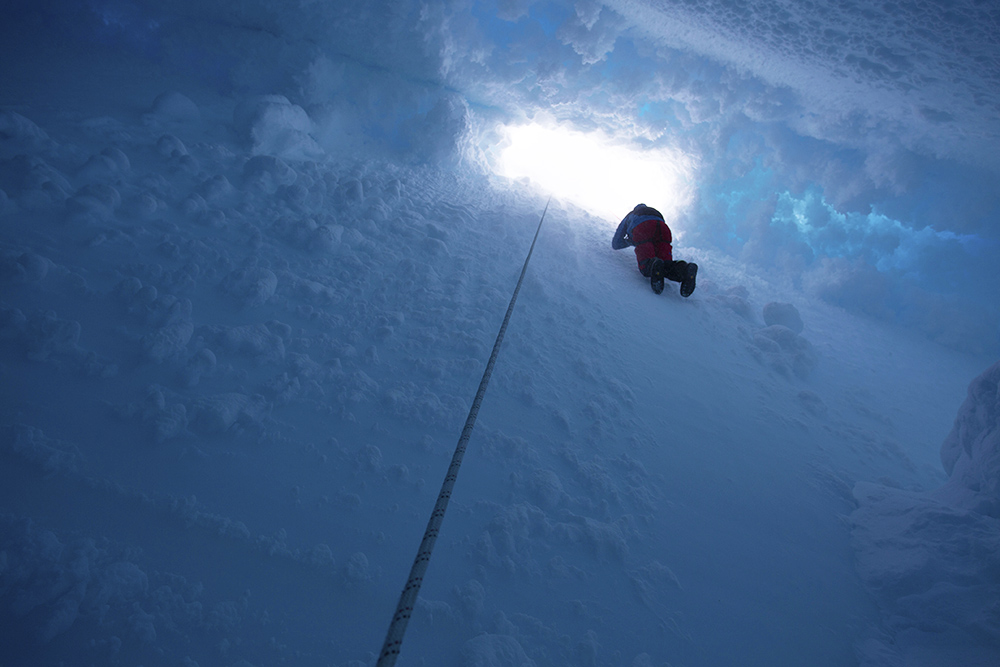
Crevasse Rescue Training: On a rope looking up at a visiting scientist being lowered down into the same crevasse.
VISITING THE SEISMOGRAPH SITE
A week after our arrival it was time to take our first trip to the Gunnestad Glacier, which flows through the Sør Rondane Mountains. We cautiously approached our field site in a snowmobile-convoy. The glacier surface was full of crevasses, so our field guide took lots of care selecting the safest route.
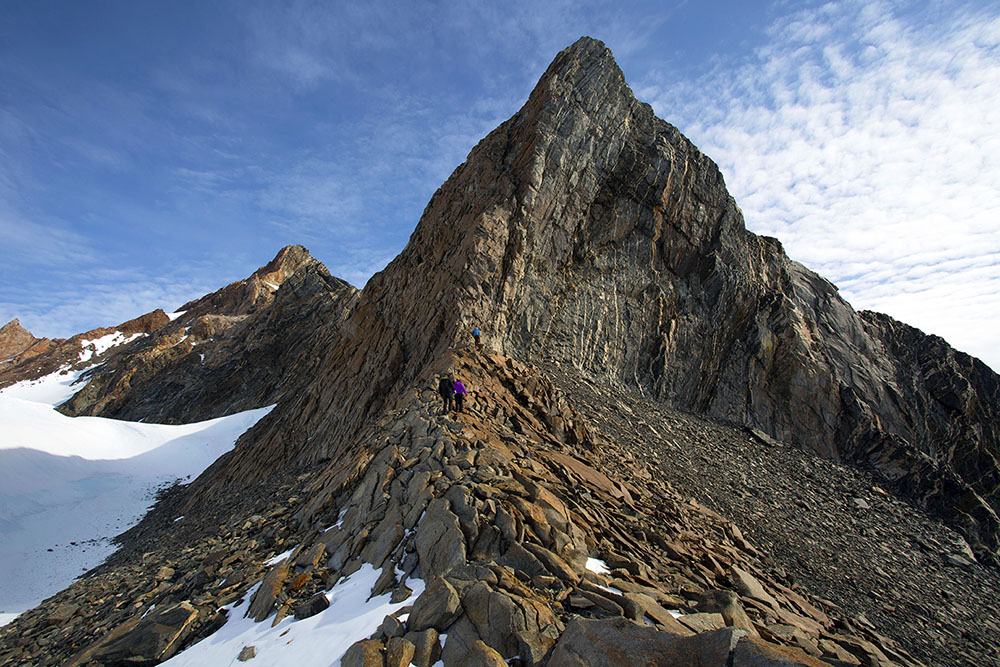
The field site with our Shake installed on the mountain ridge.
My first inclination that something wasn’t quite right was the lack of solar panels on the hillside. This was somewhat expected … Antarctic winds are ferocious. And if you’ve seen the penguin huddles on David Attenborough documentaries, then you’ll know that Antarctica isn’t the best place to overwinter.
CHECKING OUT THE SHAKE
We parked our snowmobiles on the ice and began the climb up to the Shake seismograph. It was there! Still in one piece and still in its protective wooden box! A miracle!
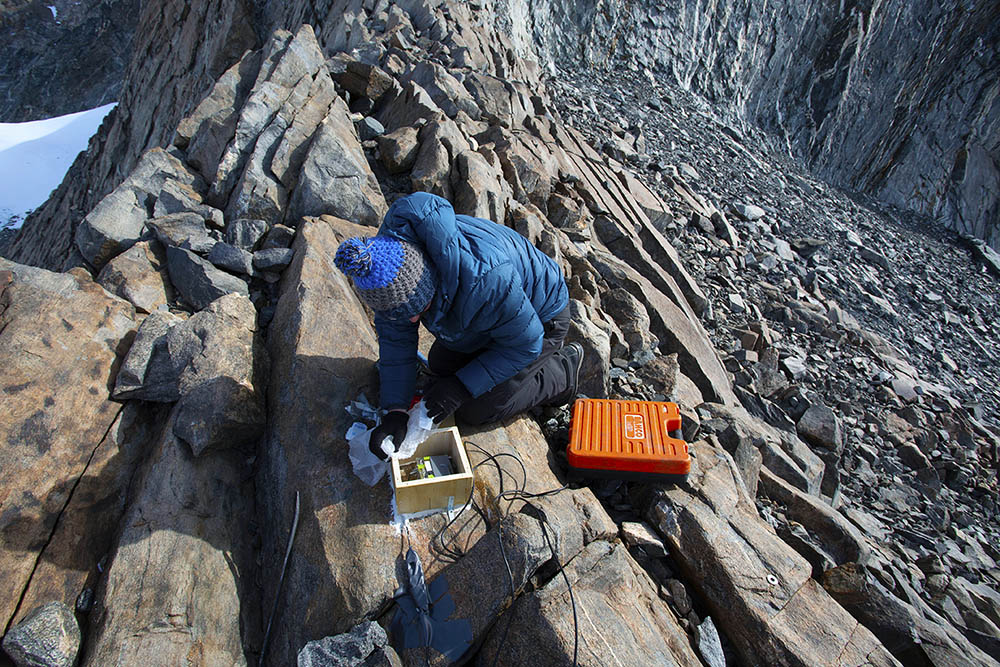
My field assistant opening up the protective wooden box housing the Raspberry Shake 1D seismograph.
The only downside was that it was no longer connected to the battery, which in turn was no longer connected to the solar panels. These we found face down a couple of meters away from their installation point. Being British, I reached for my thermos full of tea. Nothing cannot be fixed by a good cup of tea, complimented by some Belgian chocolate (the cherry on top of the zero-emission research station is that it was built by Belgians, so chocolate is aplenty). We decided to pick up all our belongings and return them to the station for a post-mortem examination. We unscrewed the wooden box protecting the seismograph and I safely stored the precious Raspberry Shake enclosure in a down-feather jacket. I have two super warm jackets, one for me and one for my equipment, because batteries, laptops and cameras prefer to be as warm as we are.
DATA CHECK
Waiting for the seismograph to slowly return to room temperature was agonising. All you want to do is plug it straight into your computer and look at the data files. However, you have to wait patiently for it to slowly warm up (whilst wrapped in bubble-wrap) to limit any unwanted side effects from rapid warming (like condensation). Thankfully I had the battery voltage logger to keep me busy. Being smaller, it warmed up much quicker. It told me that the solar panel unit worked a treat, slowly filling the battery when the sun was out until the midnight sun gave way to the perpetual darkness of the Antarctic winter. The Raspberry Shake power draw was also as we predicted (we tested the power draw in a -28 degrees celsius freezer before taking it to Antarctica). The logger showed us that the battery system worked as planned until mid-August when everything stopped. Presumably, this is when a storm came through, knocking over the solar panels, which would have pulled out the power cable.
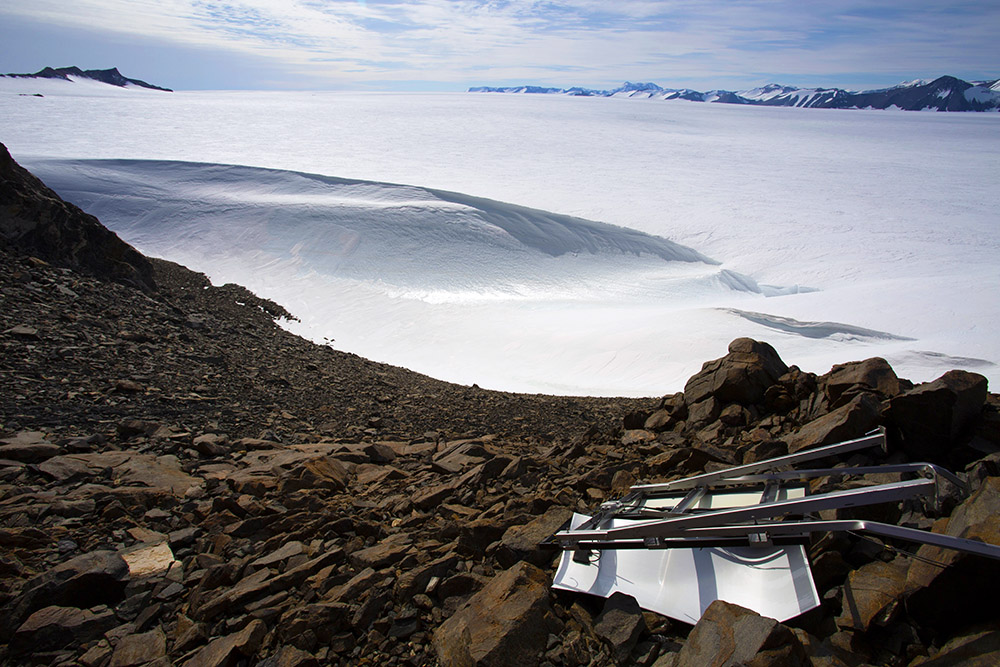
The bent solar panel frame, with the solar panels face down.
We recovered the data files shortly after, and there was a lot of data, which is a huge relief. Internet connectivity in Antarctica is very expensive, so we never really know if our scientific loggers are working until we fly in and pick them up, so I’m delighted that the system worked. Temperature loggers at the site tell us the Shake seismograph had to deal with temperatures below -40 °C for weeks and a local automatic weather station will be able to tell us about the wind speed in due course.
I am so pleased that I can report back to the Raspberry Shake community that the RS1D worked really well in Antarctica. It didn’t struggle with the cold, and it worked just fine with all the tweaks we made to keep the system offline. We just need to refine our solar panel set up!
WHAT’S NEXT?
We’re currently in the process of comparing our results to a local broadband seismometer station, so hopefully it won’t be too long until we can share our findings with you. We’ll also share our findings from the blue ice seismometers in due course. This year we put 3 x RS3D seismographs out on the ice and we’ve detected thousands of icequakes (many more than we expected). The Shakes have given us all we hoped for and more!
I’d like to sign this post off by wishing you all well in this strange new world. I hope that you are safe and well, and that like me, you are slowly overcoming the many challenges of our Covid-19 world. Community is so important at the moment, so please keep sharing your Shake stories! I love to hear them!
At Raspberry Shake we would like to say a huge thank you to Kate Winter for sharing the ongoing details of her adventures over in Antarctica. We can’t wait to hear more updates from you. Good luck!
